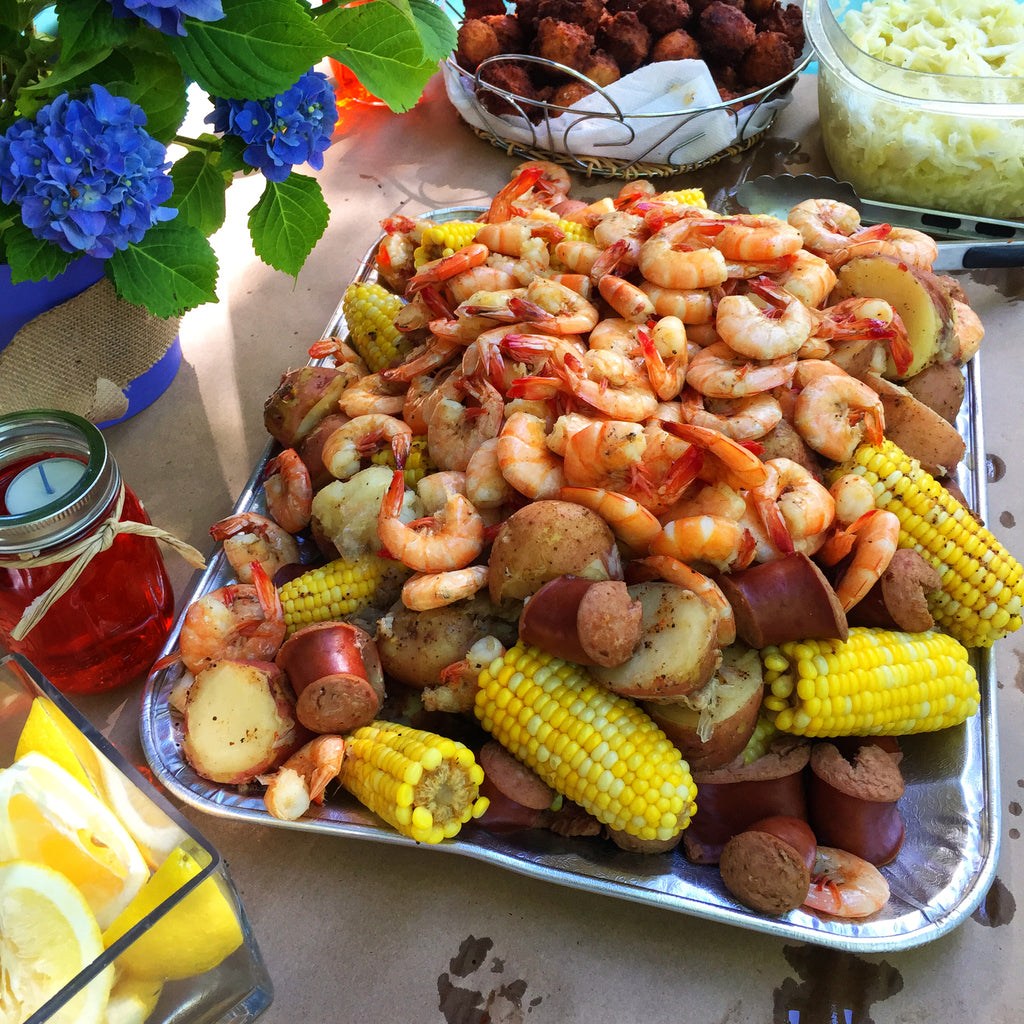
How to Create a Flavorful Broth for Seafood Boils
What Makes a Great Seafood Boil Broth?
A seafood boil is a celebration of flavors, textures, and communal dining, but the true star of the dish is the broth. The broth serves as the foundation, infusing the seafood and accompanying ingredients with bold, aromatic flavors. Without a well-crafted broth, the seafood boil can fall flat, lacking the depth and complexity that makes it memorable.
The magic of a seafood boil broth lies in its ability to balance spices, aromatics, and liquids. Spices provide the heat and seasoning, while aromatics like garlic, onions, and celery add layers of depth. The liquid base ties everything together, carrying the flavors into the seafood as it cooks. A great broth doesn’t just flavor the seafood—it transforms it, creating a cohesive dish where every bite is infused with the essence of the boil.
Achieving this balance requires careful attention to proportions and ingredients. Too much spice can overpower the dish, while too little can leave it bland. Similarly, the choice of liquid—whether water, stock, or beer—can dramatically alter the flavor profile. A well-made broth is the key to elevating your seafood boil from ordinary to extraordinary.
Essential Ingredients for a Flavorful Broth
Spices and Seasonings
Spices are the backbone of any seafood boil broth, providing the bold flavors that define the dish. Old Bay seasoning is a classic choice, offering a blend of celery salt, paprika, and other spices that complement seafood beautifully. Cayenne pepper adds heat, while paprika contributes a smoky depth. Garlic powder is another essential, lending a savory note that pairs well with the natural sweetness of seafood.
Salt and pepper play a crucial role in enhancing the overall flavor. Salt helps to bring out the natural flavors of the seafood, while pepper adds a subtle kick. For those who enjoy a spicier boil, additional chili flakes or hot sauce can be incorporated. The key is to strike a balance—too much spice can overwhelm the dish, while too little can leave it underwhelming.
Aromatics
Aromatics are the secret to creating a broth with depth and complexity. Onions, garlic, and celery are staples, providing a savory base that complements the spices. Lemons are another essential ingredient, adding brightness and acidity that cuts through the richness of the seafood. Some recipes also include bay leaves, which impart a subtle herbal note.
For an extra layer of flavor, consider adding fresh herbs like parsley or thyme. These ingredients not only enhance the broth but also add a touch of freshness to the dish. The combination of aromatics and spices creates a broth that is both bold and nuanced, ensuring every bite is packed with flavor.
Liquids
The choice of liquid is just as important as the spices and aromatics. Water is the simplest option, allowing the spices and aromatics to shine. However, seafood stock adds an extra layer of richness, amplifying the natural flavors of the seafood. Beer is another popular choice, particularly in Cajun-style boils, where its malty notes complement the spices.
Each liquid brings its own unique qualities to the broth. Water provides a neutral base, while seafood stock enhances the umami flavors. Beer adds complexity, with its slight bitterness balancing the sweetness of the seafood. The choice of liquid depends on the desired flavor profile, but all options can be tailored to create a broth that is both flavorful and versatile.
Building Layers of Flavor: Step-by-Step Guide
Step 1: Preparing the Base
The first step in creating a flavorful broth is preparing the base. Start by sautéing your aromatics—onions, garlic, and celery—in a large pot with a bit of oil or butter. This process releases their natural flavors, creating a savory foundation for the broth. Cook the aromatics until they are softened and fragrant, but avoid browning them, as this can introduce bitter notes.
Step 2: Adding Liquids and Spices
Once the aromatics are ready, it’s time to add the liquids and spices. Pour in your chosen liquid—water, seafood stock, or beer—and bring it to a gentle simmer. Add your spices, starting with Old Bay seasoning, cayenne pepper, paprika, and garlic powder. Don’t forget the salt and pepper, adjusting to taste as you go. For added brightness, squeeze in the juice of a few lemons and toss the lemon halves into the pot.
The key to this step is achieving the right balance. Taste the broth frequently, adjusting the seasoning as needed. The goal is to create a broth that is bold and flavorful without being overpowering.
Step 3: Simmering for Maximum Flavor
Simmering is where the magic happens. Allow the broth to simmer gently for at least 20-30 minutes, giving the flavors time to meld together. This step is crucial for developing depth and complexity. The longer the broth simmers, the more the spices and aromatics infuse the liquid, creating a rich and flavorful base for your seafood boil.
Customizing Your Broth for Regional Styles
Cajun-Style Broth
Cajun-style seafood boils are known for their bold, spicy flavors. To create a Cajun-inspired broth, incorporate Cajun seasoning, which typically includes paprika, garlic powder, onion powder, and cayenne pepper. Andouille sausage can also be added to the broth, infusing it with smoky, savory notes. For extra heat, consider adding hot sauce or chili flakes.
New England-Style Broth
New England-style seafood boils are milder and more herbaceous. Clam juice is often used as the liquid base, adding a briny richness that complements the seafood. Butter is another key ingredient, lending a creamy texture to the broth. Fresh herbs like thyme and parsley are used to enhance the flavor, creating a broth that is both delicate and flavorful.
Asian-Inspired Broth
For a unique twist, try an Asian-inspired broth. Ingredients like ginger, soy sauce, and lemongrass can be used to create a broth with bright, aromatic flavors. Fish sauce adds umami, while chili paste provides heat. This style of broth pairs beautifully with shrimp, mussels, and other shellfish, offering a fresh take on the traditional seafood boil.
Tips for Enhancing the Flavor of Your Broth
Using Fresh Ingredients
Fresh ingredients are essential for a flavorful broth. Fresh seafood, herbs, and vegetables ensure that the broth is vibrant and aromatic. Avoid using pre-packaged or dried ingredients whenever possible, as they can lack the depth and complexity of fresh options.
Adjusting Spice Levels
Tailoring the spice levels to suit different palates is key to creating a crowd-pleasing broth. Start with a moderate amount of spice and adjust as needed. For those who prefer a milder boil, reduce the cayenne pepper and hot sauce. For spice lovers, add extra chili flakes or a splash of hot sauce.
Incorporating Umami
Umami is the fifth taste, often described as savory or meaty. To enhance the umami in your broth, consider adding Worcestershire sauce, fish sauce, or a spoonful of miso paste. These ingredients add depth and richness, taking your broth to the next level.
Common Mistakes to Avoid When Making Seafood Boil Broth
Creating a flavorful broth requires attention to detail, and there are several common mistakes to avoid. Over-salting is a frequent pitfall, as the saltiness can intensify as the broth simmers. To prevent this, add salt gradually and taste frequently. Under-seasoning is another issue, leaving the broth bland and unappealing. Be generous with your spices and aromatics, ensuring the broth is bold and flavorful.
Overcooking the broth can also be problematic, as it can lead to a bitter or overly concentrated flavor. Simmer the broth gently and avoid boiling it for extended periods. If mistakes do occur, they can often be fixed—add water to dilute an overly salty broth or incorporate fresh aromatics to brighten a bland one.
Pairing Your Broth with the Perfect Seafood and Sides
Seafood Options
The broth is the star, but the seafood is the supporting cast. Popular choices include shrimp, crab, crawfish, and mussels, all of which absorb the flavors of the broth beautifully. For variety, consider adding clams, scallops, or lobster.
Side Dishes
Side dishes are an essential part of the seafood boil experience. Corn on the cob and potatoes are classic choices, soaking up the flavors of the broth. Crusty bread is another great option, perfect for sopping up the flavorful liquid. For added variety, consider serving coleslaw or a simple green salad.
Storing and Reusing Leftover Broth
Leftover broth can be stored in an airtight container in the refrigerator for up to three days or frozen for longer storage. It can be repurposed in a variety of dishes, from soups and stews to risottos and pasta sauces. The rich, flavorful broth adds depth to any dish, ensuring that nothing goes to waste.
Final Touches: Presentation and Serving Tips
A seafood boil is best served family-style, with the seafood and sides spread out on a large table for everyone to enjoy. Garnishes like fresh parsley, lemon wedges, and melted butter add a touch of elegance and flavor. For a fun, interactive dining experience, provide bibs and seafood crackers, allowing guests to dive in and enjoy the feast.


